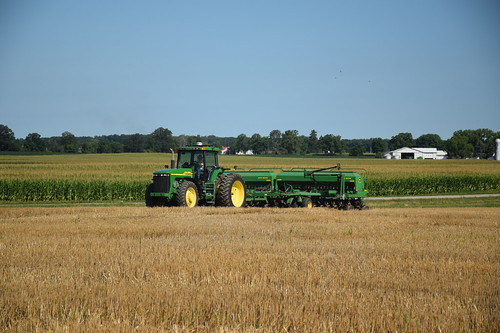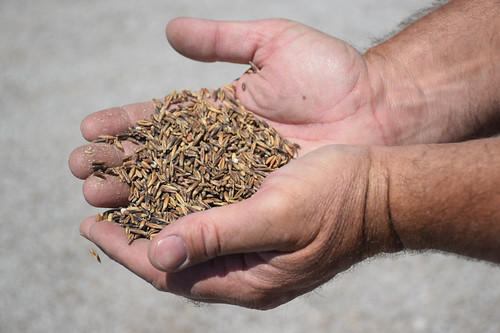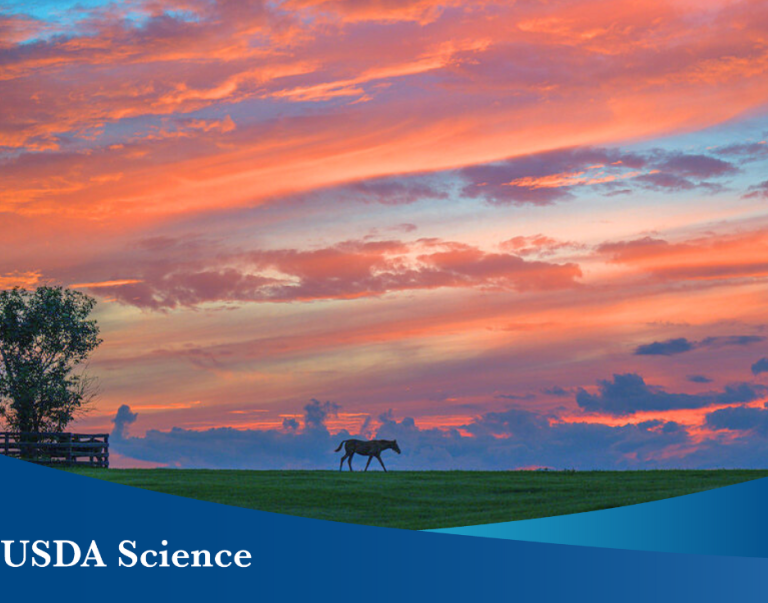

In the wake of a water crisis that left 400,000 Toledo, Ohio-area residents without water to drink, bathe or cook, the U.S. Department of Agriculture took action.
USDA created an opportunity for farmers in Ohio’s portion of the Western Lake Erie Basin to apply for a special initiative of Environmental Quality Incentives Program that focuses on cover crops. Farmers had one week to apply for assistance to plant cover crops through this initiative, the deadline for which passed earlier this week.
USDA’s Natural Resources Conservation Service promotes use of cover crops as they keep the soil covered during the fallow period, helping to reduce nutrient and soil loss. Algae in Lake Erie consume the nutrient phosphorus, which boosts their growth, causing blooms that can impact water supplies.
But cover crops cost money without any immediate return, unlike corn or soybeans. Over time they do improve soil health by keeping growing roots in the ground, increasing the soil organic matter. Increasingly farmers see that healthier soil produces better crops, as promoted through NRCS’ “Unlock the Secrets in the Soil” awareness campaign.
With only one week to sign up for cover crops through EQIP, no one knew what kind of response to expect. What usually happens in 30 days now would have to happen in seven, including getting the word out to farmers about the program. Immediately, NRCS staff working in local USDA service centers realized this program was unlike any other they’d ever experienced. Farmers started coming in to sign up the very first day and kept coming in until the application deadline.
NRCS District Conservationist Megan Burgess in Hardin County said the Soil and Water Conservation District board members, primarily farmers themselves, did the most in her county to get the word out about this opportunity.
“Their word of mouth promotion is what got people in the door,” she said.
In Auglaize County, NRCS District Conservation Jenelle Ott talked about what motivated farmers to apply. She heard one farmer say, “It’s time I do my part and do something about losing the soil off of my farm. I have seen my farm lose a lot of soil over the years, and with every rainfall see it wash away into the creek.”
NRCS District Conservationist MaryAnn Hawk in Seneca County added: “The farmers all said over and over they want to be proactive and are signing up for cover crops because they see the protection they can do.”
By the end of the program’s signup period, the numbers told the story. NRCS set aside about $2 million for this initiative that would pay for 35,000 acres of cover crops in the basin. Ohio received applications for 86,000 acres requesting $5 million.
“I think the response made it clear that producers are willing to do things to improve the lake,” said Kelly Hardison, NRCS district conservationist in Wood County.
This initiative is one of USDA’s many efforts to improve water quality in the basin. Over the past five years, USDA has worked with landowners, community leaders and members of Congress to invest about $46 million targeted to restore and protect the Great Lakes. Just this year, Agriculture Secretary Tom Vilsack designated the Great Lakes Basin as a critical conservation area, or CCA, in the new 2014 Farm Bill Regional Conservation Partnership Program, which will invest an additional $1.2 billion through conservation partnership projects to improve water quality and quantity.
For more information, watch “Efforts to Improve a Great Lake’s Water Quality.”
To get started with NRCS, visit your local USDA Service Center or www.nrcs.usda.gov/GetStarted.


